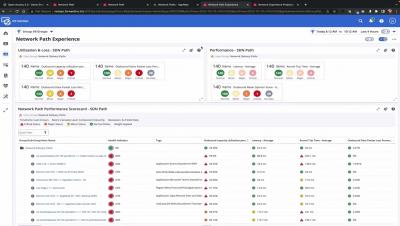Operations | Monitoring | ITSM | DevOps | Cloud
Networks
The latest News and Information on IT Networks and related technologies.
8 Ways to Meet Enterprise Network Service Level Agreements (SLAs)
Large cloud providers and ISPs offer service level agreements (SLAs) that guarantee uptime and help seal the deal with enterprises that value uptime. These same enterprises often ask IT to make the same guarantees for the performance and uptime of the internal network, its many varied connections and even the applications. At the same time, IT may have myriad SLAs from all kinds of vendors—including the aforementioned ISPs and cloud providers—it must manage.
Announcing HAProxy Data Plane API 2.8
We are proud to announce that we have released HAProxy Data Plane API 2.8, available on our GitHub page. This release follows the recent HAProxy 2.8 release and incorporates its changes, along with some improvements and changes specific to the API. HAProxy Data Plane API 2.8 adds new keywords focused on QUIC, OCSP stapling, and tuning options that allow you to customize your HAProxy process using the HTTP REST API programmatically.
Experience-Driven NetOps: The Integration of AppNeta and DX NetOps
What is Network Throughput: From Bytes to Blazing Speed
8 Common Uses of VPN in 2023: How People Leverage Its Benefits
SD-WAN Monitoring: Why Edge-to-Edge Coverage Isn't Enough
In recent years, network operations teams have had to contend with several critical challenges, including: In response to these challenges, teams are increasingly turning to SD-WAN. The market for SD-WAN is massive, and continuing to grow, potentially reaching $47 billion by 2031. Through SD-WAN technologies, organizations are able to realize a number of benefits. However, these benefits aren’t a sure thing. In fact, many teams encounter challenges with their SD-WAN implementations.
How Kentik reduces the likelihood of a full-blown cyber-attack before it happens
Organizations are under constant attack, and it’s critical to reduce the time it takes to detect attacks to minimize their cost. This first article in our new security series dives deep into how Kentik helps customers before, during, and after a cyber attack.
Your Starter Guide to Using the HAProxy Lua Event Framework
In this article, we’ll take you on a quick tour of the new Lua event framework shipped with HAProxy 2.8—plus demonstrate how Lua helps you further customize HAProxy’s behavior. We’ll start with a brief, high-level overview of Lua and how HAProxy uses it. Next, we’ll introduce you to the Lua event framework, show you what you can do with it, and familiarize you with its mechanics.











